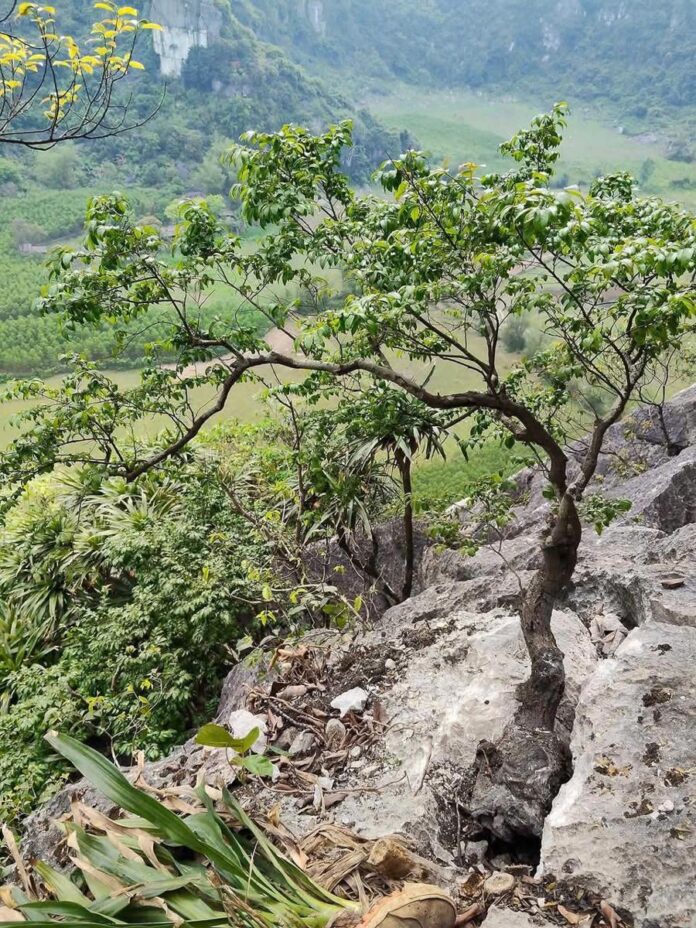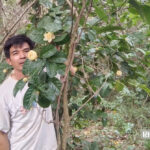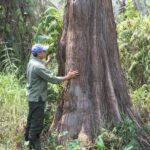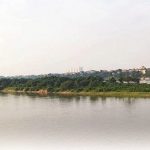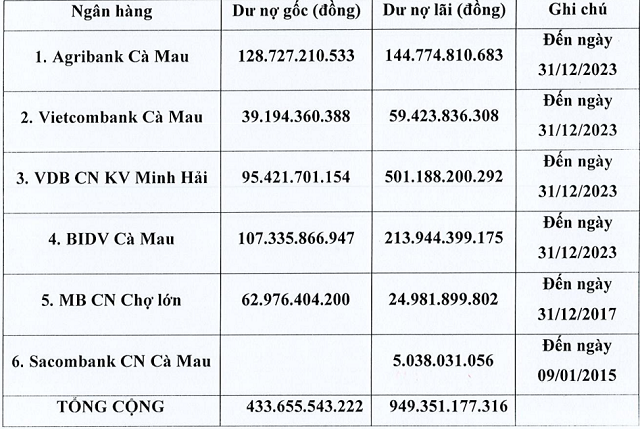Muei Hong, or the “Black Rose,” is an endemic species to the harsh limestone mountains of Thanh Hoa, Ninh Binh, and Hoa Binh provinces. Unlike most ornamental plants found in home gardens, Muei Hong thrives on sheer cliffs, where soil is scarce and water is absent, enduring only on harsh sunlight, cold winds, and mist.
Its appearance is distinctive, with a dark, charred-like trunk and a gnarled bark. The trees grow in twisting, curving shapes, following the contours of the rocks, and their small leaves are arranged in a staggered pattern, creating a rustic yet captivating aesthetic.
However, beyond this unique beauty lies a concern for their conservation and the protection of their natural habitat.

One of the most striking features of the Muei Hong is the bright red shoots that emerge from the aged trunks. These ancient trees have endured for decades, quietly existing on the cliffs, often unnoticed.
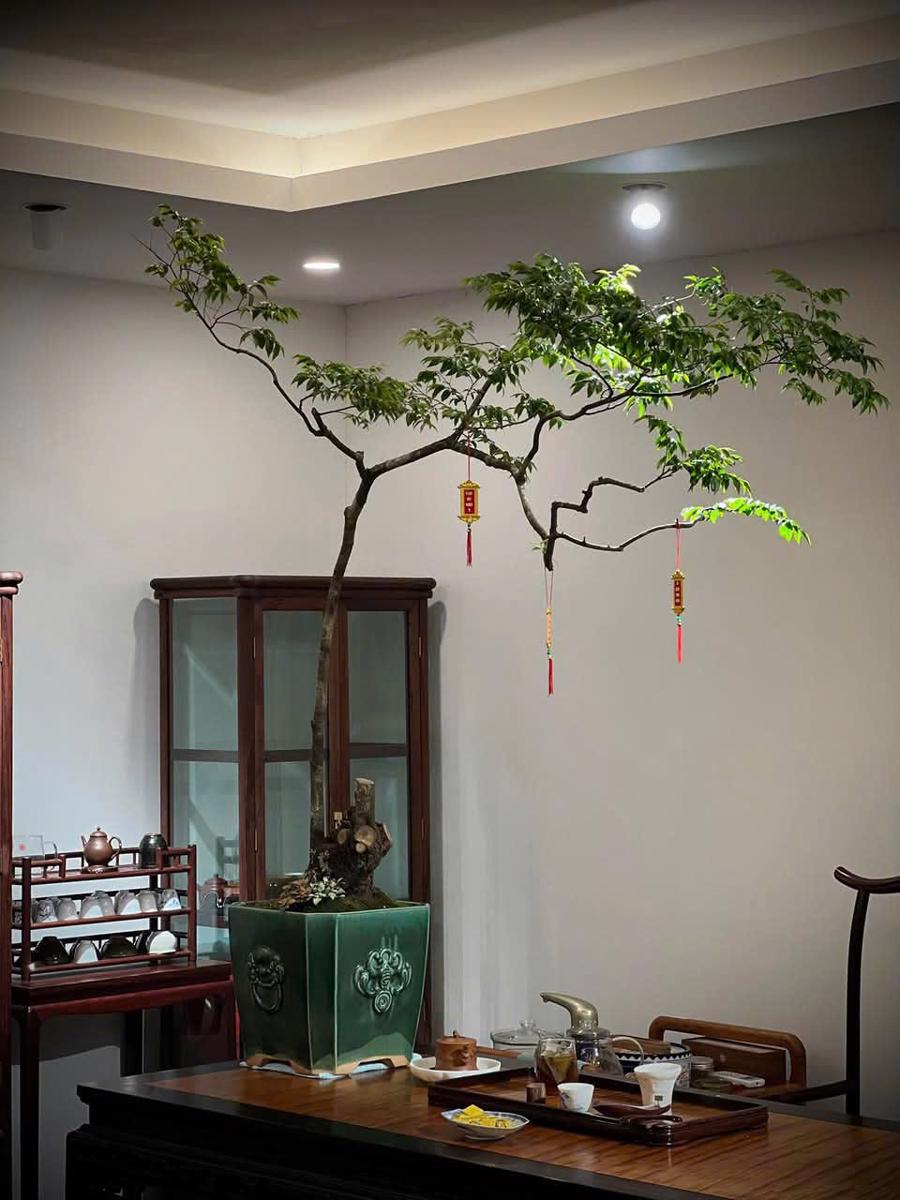
Additionally, Muei Hong possesses an extraordinary ability to survive indoors for extended periods. It can retain its shape, leaf color, and vitality for 3 to 6 months without frequent watering or ample sunlight.
This characteristic has made it a popular choice for decorating tea houses, meditation spaces, and spas, where a tranquil, refined, and natural ambiance is desired.
The profession of hunting for Muei Hong is a perilous and arduous journey. An experienced forest worker from Tan Tho commune in Nhu Thanh district shares, “The most beautiful trees often grow on inaccessible cliffs, requiring us to tie ropes and swing from one rock to another. Sometimes, we have to lower ourselves into deep ravines, using knives to clear the bushes and dig deep to reach the fragile roots while preserving the original branches and canopy.”
Once the trees are retrieved, the process of nurturing them requires meticulous care, from handling the seedlings to selecting the right soil and controlling moisture and light exposure.
Another method employed for propagating Muei Hong is stem cutting, but this is a lengthy process that can take several years for the new plant to stabilize. This technique demands a great deal of attention and careful maintenance to ensure the development of a robust root system while maintaining the tree’s natural aesthetic.
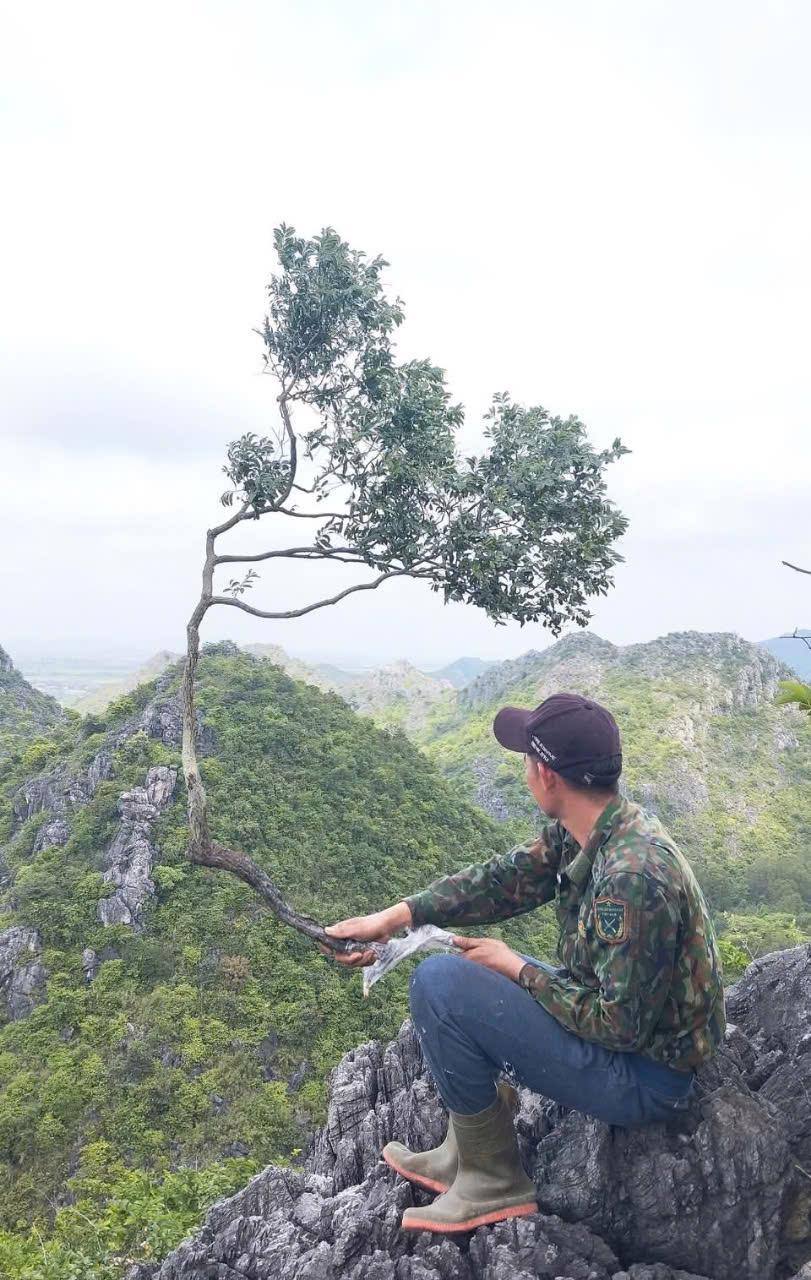
Currently, Muei Hong trees are a hot topic in plant enthusiast communities, with prices varying significantly. Smaller trees can cost a few hundred thousand dong, while a mature tree, approximately one meter in height, can fetch several million dong, depending on its shape and the balance of its canopy.
However, older trees with unique shapes and intricate craftsmanship can command prices ranging from several dozen to even a hundred million dong.
Seedlings, on the other hand, are much cheaper, but nurturing them is a risky endeavor. Buyers must devote considerable time and effort to their care, and failure is common, resulting in either the death of the tree or poor development, leading to financial and temporal losses.
This price disparity has complicated the market for Muei Hong, especially in online buying and selling groups and plant enthusiast communities. It has intensified the pressure on wild harvesting, exacerbating the risk of depleting this precious species.
“Witnessing the dangerous methods used to obtain these trees and the depletion of our forests, I decided to cultivate and nurture these trees in my garden,” shares Hoai Phuong, owner of a renowned tea house in Hanoi. “This way, I can enjoy their beauty and contribute to their conservation and sustainable development.”
The Century-Old Mansion in Dong Nai: A Glimpse into a Historic Estate Facing Demolition.
The century-old villa, affectionately known as the “House of Mr. Phu” in Dong Nai, is facing the threat of demolition to make way for a road.
Hanoi proposes planning of migratory bird protection zone on the Middle of the Red River
Hanoi People’s Committee has assigned the Department of Agriculture and Rural Development to take the lead, in coordination with the Department of Planning and Investment and Ba Vi district, to conduct an assessment and review, with a report to clarify the necessity and legal basis for proposing the planning of the wetland area in Van Lang as a sanctuary for wild bird species and migration.

